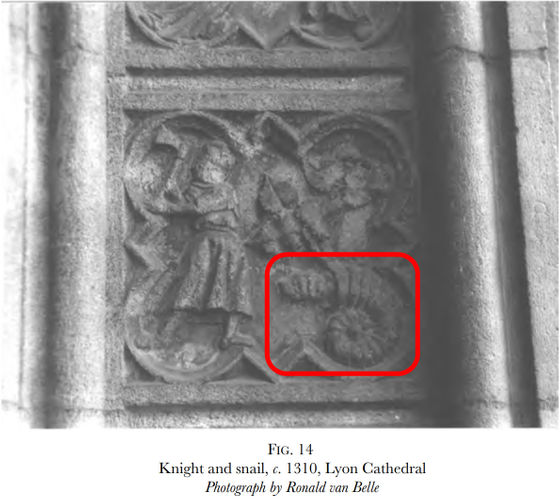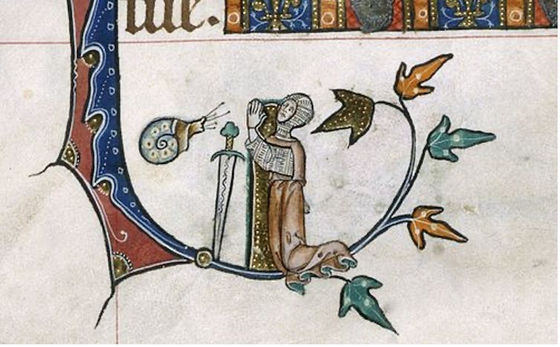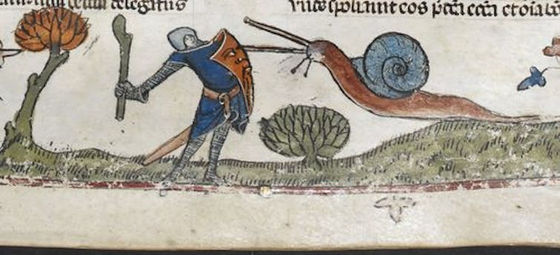Why are there so many depictions of ``battles between snails and knights'' in medieval manuscripts?

European manuscripts from the late 13th century to the 15th century often depict knights fighting snails rather than dragons or villains. Madeleine S. Killacky, who studies medieval literature at Bangor University in Wales, England, considered mysterious illustrations that are often unrelated to the content of the book and the purpose of the text.
Why medieval manuscripts are full of doodles of snail fights
According to Mr. Killacky, the battle with the snail is first seen in a colored manuscript produced in northern France around 1290. A few years later, similar illustrations began to appear in manuscripts in Flanders, England, and other parts of Europe.
Illustrations featuring snails were often irrelevant to the content of the text, often depicting a fully armed knight confronting a snail with sharp horns. Knights' weapons varied widely, including spears, clubs, maces, flails, axes, swords, and even agricultural forks.

As fighting snails became popular in manuscripts, the motif began to appear in various places in medieval life. For example, the 1310 carved decoration of the main entrance of Lyon Cathedral in France depicts a figure swinging an ax at a dog-headed snail.

Despite its popularity across continental Europe, the ``knight vs. snail'' composition rarely changed from country to country, suggesting that the motif had a deeper meaning. '' he pointed out.
However, it is unclear exactly why the snail-knight fight became so popular in the Middle Ages. According to one theory, the illustrations were meant to add humor to the serious and dry text. In other words, they were drawn to please the eyes so that the readers of the book would not get bored.

Many of the illustrations show knights dropping their swords or kneeling after being defeated by snails, which also emphasizes the satirical implications.

On the other hand, the snail was considered an exceptionally powerful creature by the people of the Middle Ages, as it could carry its own home. Therefore, fighting snails is also said to be a test of mental courage and personal strength.
In addition, the snail is also seen as a symbol of temporary courage, chosen to be overthrown to represent true strength and courage.

The motif of snails and knights fighting, which was popular around the 14th century, was briefly revived in manuscripts at the end of the 15th century, and then disappeared from manuscripts over time. The remnants of this can be seen in the passage of a nursery rhyme handed down in England, ' Twenty-four tailors went to get rid of snails .'
Related Posts:







